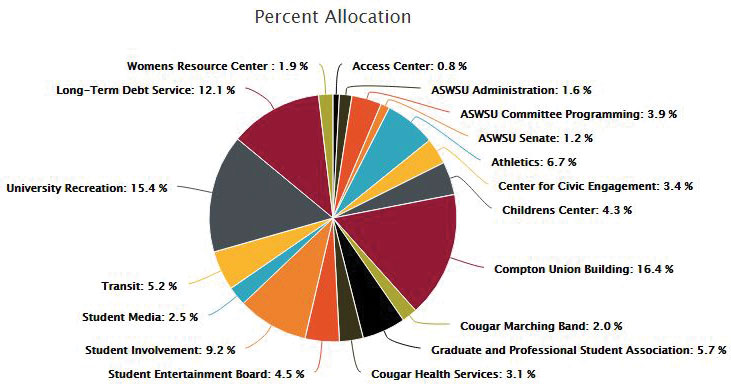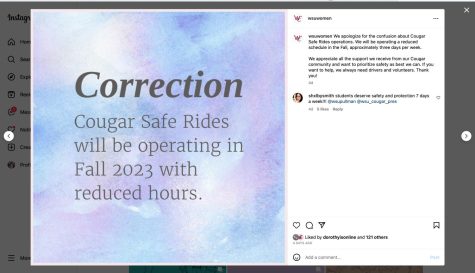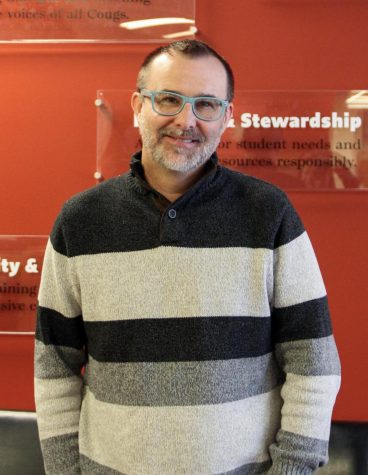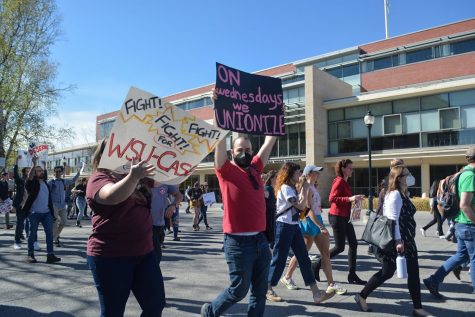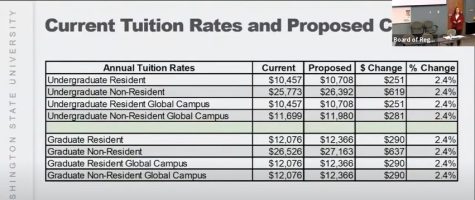How student fees are used at WSU
Building, operating costs make up tuition, S&A varies by year
The CUB and University Recreation take the largest cut of WSU Pullman Service and Activities fees, while the Access Center receives one of the lowest cuts.
August 10, 2018
One thing on the mind of most college freshmen before they ever sit in a university classroom for the first time is student fees.
ASWSU President Savannah Rogers said students should be curious about where their money goes.
“Don’t be okay with just seeing the words ‘tech fee,’ ” Rogers said. “It’s important to ask and know where your money goes.”
Information on student fees can be found online, with websites showing figures for tuition numbers and Student and Activities Fees breakdowns. However, these statistics can be confusing for some.
WSU Chief Budget Officer Joan King said tuition is made up of two different sections, building and operating fees.
“The building fee goes directly into a building account that is managed by WSU and is used to augment state funding when we build new buildings,” King said. “For operating fees, think about that as the operations of the educational endeavor.”
King also said tuition rates rose 2 percent this year, causing an increase in student spending.
While tuition may be the most widely-known student fee, S&A fees also play a large part of the financial requirements of attending WSU. This spring, the S&A committee voted to cut down the amount students pay toward this fund by 2 percent.
Each student will pay $537 in S&A fees this year. King said this charge varies in amount on each WSU campus.
“It varies widely based on what the students on each of those campuses want,” King said.
She said some programs funded by S&A fees include the Cougar Marching Band, ASWSU, GPSA and the Children’s Center. The CUB receives the largest cut of funding with University Recreation taking a close second place, according to the S&A fees website.
King said if students are curious and want to see a more detailed breakdown of where the pool of money goes, they should visit the school’s S&A website.
“We have this really nice new website to give students a good look into, ‘okay, I pay 500 plus dollars a year, where does that go,’ ” King said.
Other small fees include fees for technology, health, Martin Stadium, the Chinook, student media and transit among others, according to the WSU budget website.
Rogers said she would like to find a balance that would not increase fees on students while also avoiding funding cuts to student services.
For more detailed information, students can visit budget.wsu.edu or studentfees.wsu.edu for more information.


